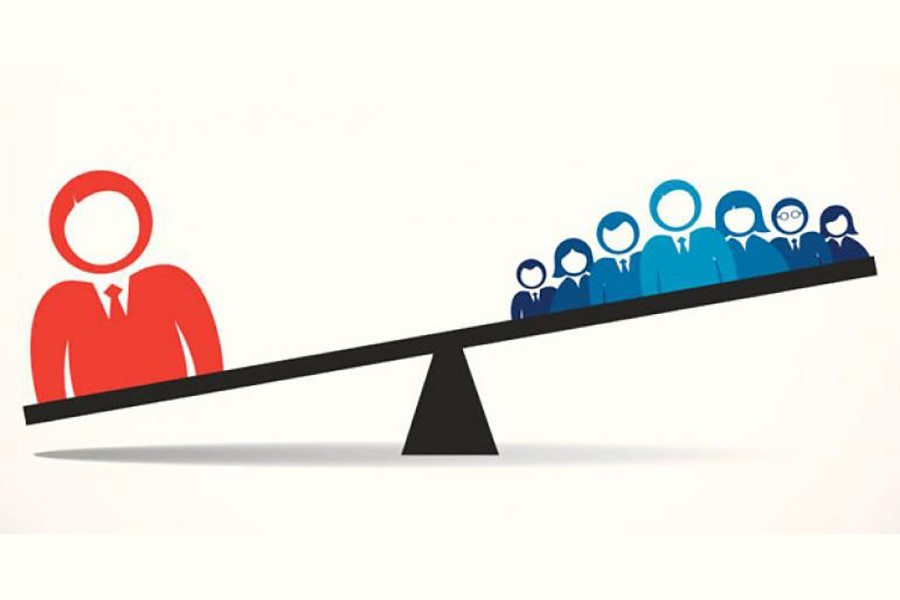At a seminar titled 'Income and resources disparity in Bangladesh, economists have sounded the alarm bell ringing over the rising income inequality. The main argument put forward is on the basis of the Gini coefficient reading which has been on a steep trajectory since 1996. Now that the Gini coefficient is 0.483 closer to 0.5, a mark or level considered concerning for an economy, the participating economists warn the policymakers to strive for rolling back the consequences. In free market economy, the process of wealth creation does not always ensure fair distribution of dividends. When a poor country embarks on industrialisation or starts accumulating wealth through business or commerce, financial regulations are either overlooked or kept lax because initially the overriding compulsion has been wealth creation. Bangladesh is no exception to this rule. But it seems it has gone too far. There was need for reining in the financial malfeasance much earlier.
The country's progress has been remarkable over the past decades. This year it ranks as one of the top five fastest growing economies in the world and the fastest in the Asia-Pacific region. If the momentum holds for another decade, the country will definitely become a middle-income one by 2030. Where does the fault line lie, then? Most likely the means of production is where things have not gone well enough to ensure socio-economic justice. The village economy has got a more or less stable ground under its feet largely because of farmers' willingness to adopt modern method of cultivation and diversification of crops. They must be appreciated for both enterprising spirit and entrepreneurship. But still in fragmented land plots, unlike huge expanses of cultivable lands in some western countries, wealth creation does not take place in a big way.
The manufacturing sector has been doing fine but falls short of playing its due role. Apart from the readymade garments sector which has pulled a large number of workers into the system, the rest are not equally accessible to unskilled or semi-skilled workers -men or women. The garments industry could flourish because wages were very low from the beginning. Now that many factories are opting for automation, female employment, according to a recent report, has become something of a casualty. This points to the fact that the management might use the underprivileged as long as they prove useful but could phase them out when factories or industries go for automation or improvement. On-job training or retraining could help avoid such probable retrenchment.
Restricting the range of Gini coefficient is challenging when the country boasts the highest rate of emergence of super rich between 2012 and 2017. The trend is likely to continue. This means created wealth is not judiciously reinvested and the method of wealth creation is not always transparent. Had the resources been invested in standard education, training and employment, there would not be directionless idle wealth accumulation. Investment in human resources could bring about a paradigm shift in social progress. The super rich should be ready to dispose of a far greater proportion of their incomes for investment in human capital. This is how the frightening spectre of gross maldistribution of wealth can be avoided.


